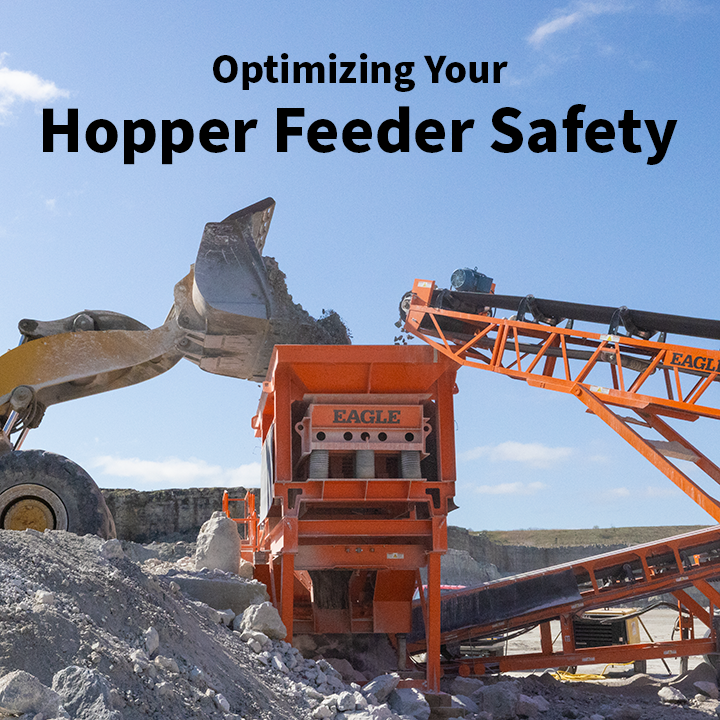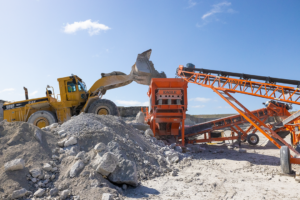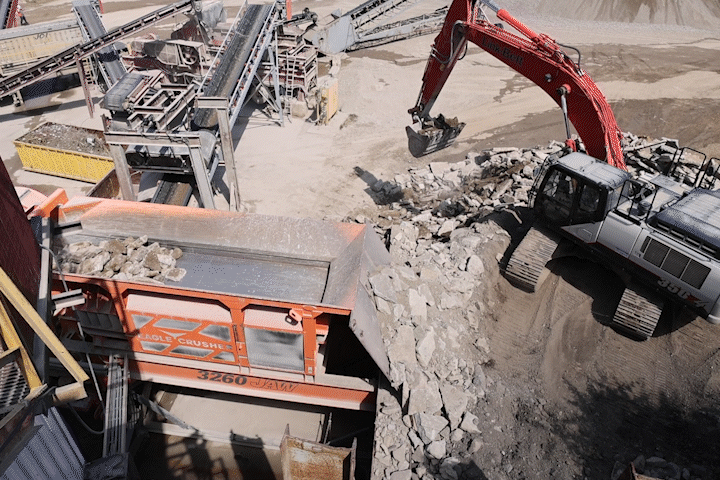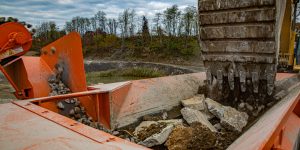Optimizing Hopper Feeder Safety

Optimizing Hopper Feeder Safety
No matter how well crushing machines are designed to protect their operators from injury, manufacturers can never completely safeguard for moments of error, oversight, and even disregard. While it may be tempting to cut corners in order to avoid downtime, trying to save even a few moments of time could lead to serious injury or death. That’s why we want to make sure you know how to optimize your hopper feeder safety recommendations and protocol.

Be Aware
One of the more proactive choices that any safety-conscientious operator can make to reduce risk is to remain vigilant. When operating stone crushing equipment or operating vehicles for depositing material, like aggregates or concrete, into the hopper feeder, take time to assess the area for any potential issues. These issues could be, but are not limited to, workers too close to equipment or obstructions in the hopper feeder itself.
Only Feed Appropriately Sized Materials into The Hopper Feeder
To prevent obstructions, the general size of each rock being fed into the hopper feeder needs to be assessed. It is recommended that any materials being fed into the hopper feeder should be at most 80% the size of the crusher opening into which the feeder processes material, often referred to as the F80 rule.

Never Put Body Parts Where They Do Not Belong
As material is being processed, it is unequivocally advised that plant operators should never attempt to pick out material as it flows through the hopper. This kind of irresponsible activity, from atop the operator’s platform or on top of the crusher, is a serious breach of safety and could result in serious injury or death.
Should an obstruction occur in the hopper feeder, it is important to shut down the crusher plant and to follow proper lock-out-tag-out procedures as soon as possible without creating any additional safety issues. Shutting down the plant, as well as waiting for the crusher to totally stop, will prevent any injury to the crusher and its operators as the obstruction is removed.
After the crushing plant is shut down and properly secured from starting up, the obstruction should be assessed to determine what material needs removed. Operators should attempt to remove the obstruction by mechanical means first, and if the material cannot be removed by mechanical means, it should then only be manually removed by someone who has been competently trained.
Have A Spotter
Whenever you are operating industrial crushing equipment or addressing safety concerns, it is always best to have a spotter to watch for any emerging issues. Remember, saving lives is more important than saving time; following safety protocol is in the best interest of everyone involved, so please take time to be mindful and to be safe.

Perform Preventative Maintenance
Daily inspections at the start and end of the day can go a long way in increasing the longevity of a hopper feeder. Worn liners need to be replaced in order to protect vulnerable hopper feeder components. One way to slow the rate of liner wear is to ensure a portable crushing plant is level to prevent uneven wear.
Furthermore, the drive motors for equipment like hopper feeders should be appropriately lubricated, and oil levels should be properly managed. Tasks like examining springs and prescreens should also be included on maintenance plans.
Knowing Who to Ask for Help
It’s no simple task to ensure that safety is being maintained in every level of production, that’s why we at Eagle Crusher want to make sure that you feel ready and confident about your safety protocols. We encourage you to reach out to our Team Eagle members if you have any questions or want more information.
This article does not serve as an official safety recommendation by Eagle Crusher and should not be viewed as such. All relevant staff should consult their owner’s manual before operating Eagle Crusher equipment, or any other manufacturer’s equipment, and comply with the safety guidelines therein.


